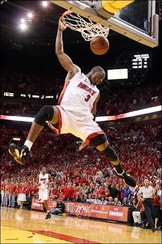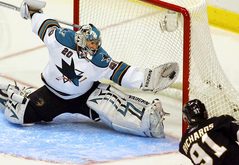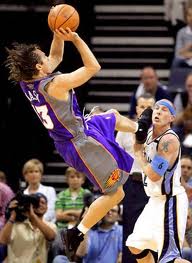 You think you’ve got everything to know about winning in daily fantasy football? Well, think again. Here are more essential tips to help you be on top of your daily fantasy football league. • Don’t draft a backup tight end The more tight ends are glorified as wide receivers, the more the remaining tight ends on the waiver list are easily put into your starting lineup during a bye or after an injury. This is also why I think we might start seeing more two tight end leagues in the future. • Always fill an RB/WR/TE spot with a running back There will be times during the season that you’ll have to throw a receiver or a tight end in there, but don’t draft them and set them as your goal. A running back that has made 15 touches will often have more points than that of a receiver with 5-10 targets. And if you follow the backup RB suggestion, you should have a decent back to fill that spot even on bye weeks. • Don’t draft according to bye weeks Byes are always the easiest thing to forget while you are in the middle of the draft and that’s not the end of the world. Football hasn’t quite caught up with baseball, so we are stuck with head to head leagues so you do need to win as many weeks as possible, but if the value is there, draft the best guys and sort the rest out later. • Know ADP I’m talking about Average Draft Position. You may have the inside scoop that Maurice Jones-Drew‘s knee is actually now the consistency of oatmeal mush and you are going to jump on Rashad Jennings, but when? Make sure you check out the ADP, and especially the ADP from the site you are using if that’s possible. • Use a cheat sheet This can be one you can make or one from a site or expert you like, but whatever the source is, be prepared. There’s nothing worse than having that draft clock ticking down and you have absolutely no idea who to pick. I made up this tier sheet that I use for myself and keep updated. Be a boy scout and be prepared, but don’t be the last boy scout, that movie was just so-so. • Don’t draft a D or K until the last 2 rounds But you can draft a dork. This is really a no brainer, but there are always those managers who reach for defense and sometimes even kickers. Fantasy defenses and kickers change so much from year to year that wasting a pick, even a round or two earlier is a for real waste! I sometimes don’t even take a kicker and sometimes even a defense, especially if the draft is before or during preseason games. If you can take a late round flier on a player that could win a position battle and be worth more than someone you picked earlier, you can be ahead of your league mates. Streaming kickers and defenses is entirely feasible. • Mock draft as much as you can Many of your run of the mill fantasy leagues have very few bench spots because people have to mow their lawn or take the dog out to poop, and it is often difficult to make up for bad draft picks with late upside bench players. So you need to feel comfortable drafting from different positions. There are tons of places to find mock drafts, but don’t waste your time on these mocks that don’t fill with real people. We play fake football, but not with fake people. • Don’t buy a fantasy football magazine Yes, they have glossy pictures and your plane was delayed and you don’t want to read about the debt ceiling, but really, fantasy football magazines are out of date before they are printed. The Internet is instantaneous. • And one more time; be flexible If you have done enough research in daily fantasy football in general, you should have a good idea of the players you want, so don’t be too rigid and don’t follow some dumb rules that some idiot puts on the Internet! I mean really. The more you know, the easier it is to be flexible, so check out our articles here and just soak in as much as you can.
This is your new blog post. Click here and start typing, or drag in elements from the top bar.
 I’m going to throw a very helpful idea for spreading your bets around and reducing variance in your bankroll: Playing on multiple sites as a daily fantasy strategy . Everyone who chooses to play daily fantasy contests should have at least two different sites where they feel comfortable playing. It is sometimes preferred play at sites with a similarity in stats and rosters, but you guys may find other sites better suited to your tastes. Go ahead and split your bankroll in half between two sites. This accomplishes two things with your daily fantasy strategy: 1) it allows you to play different opponents which spreads risk and 2) if the two sites are structured just a little differently, it will allow you to select different fantasy players and create different rosters on each site. If you choose to only play on a single site, there’s usually a clear single best roster for that site’s game structure. However, if you spread your bets across multiple sites, the correct roster on one site may be different from another site. Spread the risk to reduce the bankroll variance. So, how does this daily fantasy strategy work? Through the pricing system of the players which are a little different on each site. Some sites use an average season fantasy score, while others use a weighted dollar salary amount. The two different player pricing methods often make a fantasy player a good choice on one site, but not such a good choice on the other site. Many times you will have different rosters on each fantasy site, but both will be the optimum roster for that particular site’s pricing mechanism. So, if Kobe Bryant pulls up with a tweaked hamstring in the first three minutes of the game, you might get killed on one site, but your games on the other site will still be in good shape because you decided Kevin Durant was a better SF choice under that site’s particular pricing system. While this won’t always save your day, it does help reduce risk and control huge swings in your bankroll. Good luck.
This is your new blog post. Click here and start typing, or drag in elements from the top bar.
 Simply put: Collective intelligence. In collecting information on daily fantasy rankings, one should take the "wisdom of the crowd" to a new level by aggregating the daily fantasy rankings of the best fantasy football sites on the planet to analyze the rankings given to each player to produce a consensus ranking. There is existing technology created to bring the wisdom of the crowd into a manageable environment. That’s what makes it so unique. Anyone can aggregate daily fantasy rankings and projections and then average them out. This is a results-oriented process for normalizing the rankings and projections. Weighing the rankings based upon past accurate information can give you an edge that your competition doesn't have. There are sit/start rankings that provide a cumulative rank from expert projections around the Internet. If you've got a tough sit/start decision, check out the different sites’ daily fantasy rankings to see what the experts think. The innovative draft rankings system provides a consensus ranking for overall draft rankings, as well as positional rankings. In theory, having 20 heads is better than 1. It's useful for seeing what the experts from the major fantasy websites are thinking and projecting. Your one ultimate source brings that collective intelligence into one location. You should know how to compare rankings from sites such as NFL.com, ESPN.com, CBS Sportsline, FOX Sports, Fantasy Football Calculator, Bruno Boys, Fantasy Football Toolbox, Fantasy Sharks, and more to produce the Internet's best fantasy football rankings system. We like to think that your collective knowledge does for fantasy football what automobiles with GPS can do for travel, but that's just our opinion. If you find this useful, help us spread the word to the fantasy sports world.
This is your new blog post. Click here and start typing, or drag in elements from the top bar.
 First off, as with all kinds of fantasy sports, daily fantasy hockey requires a pretty good knowledge of the sport and the match-ups for the day. Just like any other sport, you should be drafting players that are facing weak competition or weak defenses. You also want to draft players that are "hot" and have been putting up solid numbers over the past few games. Daily fantasy hockey gets unique in some of its scoring rules. The two most important are: 1. A Goalie Scores 20 for a Win While hockey goalies do not usually score much more points than top skaters, they do get 20 huge fantasy bonus points for a win. Therefore, it’s rather important to have a goalie in your team that can get a win. This is like fantasy baseball wherein the pitcher also gets a bonus when he wins it for his team. However, with daily fantasy hockey, it is not always obvious who the starter for the game will be. So the key strategy is to have a goalie that is likely to get the win, and even more important, one who is very likely to start. For the likely winner, you can check online sportsbooks to find which teams are heavily favored. For the likely starter, this is a bit tougher. Obviously, teams who rarely rotate goalies are safer than teams with two strong goalies. Sometimes you will just need to do some research and find out who the planned starter is for the day. The bottom line is the 20 points are going to be important to your fantasy team’s success, so choose your goalie wisely, and don't be afraid to spend a few bucks here. 2. +/- Statistics Count as 5 Points This is a very unique scoring rule for daily fantasy hockey. If your player is on the ice when their team scores, you get 5 points, and if they are on the ice when their opponent scores, you lose 5 points. So, you obviously would want players who do well in +/- situations. Many players do well on +/- situations in general, but that is reflected on their cap value. What you really want to know is how well they’ll do in the next game. Here is where you will want to have players from the day's winning teams. Since the winning team has scored more goals than the losing team, the winning team will have more "plus" stats than "minus" stats in general. You can again consult an online sportsbook to see who the most heavily favored teams are. And in general, draft players from those teams and not from teams expected to lose. Don't make the mistake of drafting a good fantasy hockey skater who is facing a tough match-up and whose team will likely lose. Their personal stats may not be able to overcome the minus stats that may come.
This is your new blog post. Click here and start typing, or drag in elements from the top bar.
 Come playoff time in the head-to-head daily fantasy basketball leagues or in the final leg of the rotisserie leagues, it is only fitting to congratulate yourself if your team is within striking distance of the championship. Now, the question is how can you bring it home? • Focus on winning the week in head-to-head playoffs Planning ahead is a good idea as long as it doesn’t get in the way of your team’s ability to win its matchup for the current week. Head-to-head playoffs are typically single elimination, so do anything and everything necessary to win the current week. • Your league settings matter The rules of your league should dictate your strategy. The most important factor is your league’s categories since they dictate how valuable each player is and ultimately decide who wins and who loses. People in weekly leagues have more flexibility when it comes to stashing players, especially injured players. But it is important to spend some time planning ahead using the upcoming weekly schedule. Make sure you get as many as four-game weekly players as possible in your lineup every week. Sit anyone with two games, unless they are superstars. You’ll also have to make the right calls on injured players who are likely to play in the week, so it is best to always play it safe. People in a daily fantasy basketball league have it a little easier and they have the ability to adjust to injuries that happen during the week. You also have more opportunity to exploit the system by shuffling players on and off your team to maximize games played. It is important not to miss a lineup change during the playoffs if you are in a daily league—one missed lineup can easily set you back 2-3 games on your opponent. • The 5-4 strategy If you’ve got a particularly difficult matchup in the playoffs, remember that in a typical 9-category scoring league, all you have do is go 5-4 for the week to win. There are no style points in the playoffs; all anyone will remember about the league is who won it, so take an inventory of your team. What categories are your strengths and which categories are you weak in? How about your opponent? Find the five categories you are strongest in and focus all your attention there. Drop the rest. If you have players that don’t contribute in those categories, remove or bench them. Only pick up free agents who will help your strengths. • Maximize the games in the roto leagues A common mistake done in daily fantasy basketball roto leagues is not using up all the games available to your team if your league caps the games played. While you wouldn’t want to go through all the games 2/3 of the way into the season, it’s also unwise to leave the games at the end of the year. • The game schedule can be a big deal Over a 2-4 week playoff period, NBA schedules become a very important factor. Teams can have a difference of as much as three games over that span and the quality of opponents that a team faces also differs greatly over such a small period. Loading up your fantasy team with players who have good to great schedules means 1) you’ll be outgaming your opponent, and 2) your players will be facing off against more fantasy friendly opponents, which are opponents who tend to give up a lot of fantasy stats.
 If you want to win money playing fantasy sports, selecting the right site to play at is a huge factor. The rake and overall game structures vary from site to site. There are sites that are friendlier to new players, while there are others that are friendlier to sharks. No matter how good you are at daily fantasy baseball, site selection can have a huge impact on your ROI. So, here are a few guidelines to follow in helping you select the best site to play your daily fantasy baseball games. • Rake The rake is taken directly from your winnings, so playing in a low rake setting can only increase your winnings and return of investment. The typical rake is 10-20% in the daily fantasy sports industry. • League Structures The daily fantasy baseball site must have the widest variety of league structures possible in the industry. If you have an edge in picking scrubs, or picking stars the fantasy site must have the cap structure that will let you take advantage. It should also have the fastest and easiest automated draft possible for those who don’t like to share players for the day. Moreover, the individual player cap values should be transparent. For performance-based caps, they should be exactly proportional to the average fantasy points a player earns per game. For salary-based caps, it would be good to have the player’s actual salary per game. Other sites use complicated formulas that you would need a PhD to understand. The last thing you want to do in playing daily fantasy baseball is to try to adjust for bad player cap values. Bad player cap values also tend to take the skill out of the game, and make it more of a luckfest. • Overlays and Guarantees The prizes offered at fantasy sports sites should all be guaranteed, and all multi-player leagues can pay an overlay. Overlays are when the site is paying out more than they are taking in for the league. This is money in the bank for the profitable daily fantasy sports player, and those in the know are all over them. There are some sites that prohibit overlays in their rules. This means that the prizes are not really guaranteed, because they will not run a league unless the sites are guaranteed to make money. Awesome sites should value customers and should not let them waste valuable time entering a league that may or may not run. So anytime two or more players want to compete to make the fantasy baseball league skill-based, the prizes should be paid out as advertised. • New Player or Shark-Friendly The ideal fantasy sports site should be new player-friendly, which tends to lower the quality of competition. Most competing sites are shark-friendly, which tends to raise the level of competition. I will not go into detail as to why, but I will say that it is easier to win money in daily fantasy sports from a new player than a shark. • League Traffic A good fantasy sports site should have a large traffic base and should have at least a convincing tenure in operation. Most competing sites are pretty light on traffic, lowering your chances for getting the match-up you are interested in. These are the most important site selection factors for profiting at fantasy sports, and there are quite a few that meet every single criterion.
 During the early days of fantasy football, people had to walk a few miles uphill, in the snow, to make their fantasy football selections during draft day. Correspondence was also done through the Pony Express then, and people always drafted running backs in the first round. This antediluvian practice had its day under the fantasy sports sun. While a few ancient relics remain in every fantasy league, a new daily fantasy strategy has surfaced across fantasy circles. Here are a few of these new draft strategies to utilize this season. 1. Lose for a Week, Win the Rest You have enough in your arsenal of information to remember on draft day: cheat sheets, power rankings, draft boards, and smack talk. All these are still very important to have an excellent fantasy draft experience. Select the best players you can have in each round without taking the bye weeks into consideration. If you’ve managed to put together a talented roster with a lot of week ten byes, you have nothing to worry about. Not only will you have nine weeks after you carry out this daily fantasy strategy to figure something out, but you’ll also have 12 other weeks of full fantasy strength. 2. Bipolar Disorder Fantasy football team owners take all boom or bust players. They are guys who can score huge numbers in any given week, or put up nothing. It’s a “living on the edge” approach that has its highs and lows. Playing fantasy football is about taking calculated risks. So in order for this strategy to work, an owner has to make the right choices. This is a great strategy for leagues that offer weekly prizes for the highest scoring team. 3. The Batman and Robin Yes, it has a corny ring to it, but it’s kind of a trendy one. After the top running backs go off the board, grabbing a top receiver like Andre Johnson has become commonplace in fantasy drafts. What happens next is that same owner will take another top-tier wide receiver in the second round. This strategy might not have worked ten years ago, but it’s brilliant today, especially in leagues that give points for each reception. With the onset of running-back-by-committees around the league, fantasy owners can get away with not grabbing a starting RB in the first two rounds of a draft. Meanwhile, the top 15 wide receivers should greatly outperform the rest of the crop. If you can score a couple of these guys and pair them with a deep bench of running backs, it could be the blueprint for a fantasy championship team in 2010. Now that’s worth a risky fantasy football draft strategy. 4. Go for QB 1 Some fantasy team owners think that being successful in playing the games is all about the quarterback. This is highly debatable, unless you have the opportunity to grab Drew Brees or Aaron Rodgers in the first round, which will have your team compete every week of the season. To avoid having to select Brett Favre as a starting QB in the middle rounds of the draft, just grab a stud in the first round and be done with the position. That’s definitely an easy daily fantasy strategy.
 The goal is to assign a numerical “fantasy point score” (FPS) on each NBA player that accurately reflects his daily and seasonal fantasy production which can be used to compare the overall daily fantasy rankings of individual NBA players against each other on a daily or seasonal basis. On any given night, players who are expected to greatly exceed their season average per game fantasy point score (FPS) are targeted, and those players who might underperform their season average per game fantasy point score (FPS) are avoided. Season average per game fantasy point scores will always appear in parentheses beside a player’s name such as LeBron James (48FPS) for example. Season average per game fantasy point scores will be updated for each player to determine his daily fantasy ranking. For the 2010 summer offseason and first month of the 2010 to 2011 season, we will use each player’s final FPS score from the previous season when discussing ranking and value. Here’s the basic math of the Fantasy Point Scoring (FPS) system: Three Point FG = 3 Fantasy Points (3 FP) Two Point FG = 2 Fantasy Points (2 FP) Free Throw = 1 Fantasy Point (1 FP) Rebound = 1 Fantasy Point (1 FP) Assist = 1 Fantasy Point (1 FP) Steal = 2 Fantasy Points (2 FP) Block = 2 Fantasy Points (2 FP) Turnover = -1 Fantasy Point (-1 FP) Formula: Three Point FG FP’s + Two Point FG FP’s + Free Throw FP’s + Rebound FP’s + Assist FP’s + Steal FP’s + Block FP’s – Turnover FP’s = Player’s Fantasy Point Total Score (FPS) For example: LeBron James scores 30 points (3 three point FGs, 5 two point FGs and 11 free throws), picks up 8 rebounds, 5 assists, 2 steals, 2 blocks and three turnovers. His total Fantasy Point Score (FPS) for the game would be calculated as follows: (9 + 10 + 11) + 8 + 5 + 4 + 4 – 3 = 48 FPS If you really want to get quick at calculating the formula, simply count each point scored as 1 FP. There is no need to break it into 3PT FG’s, 2PT FG’s and FT’s when calculating the formula. It is simply broken into pieces to show how each type of scoring was incorporated into the system, so the above game for LeBron is more easily calculated as follows: 30 + 8 + 5 + 4 + 4 – 3 = 48 FPS. The system provides a quick and simple method to examine production, compare players and determine their daily fantasy rankings. Once you are familiar with using the fantasy scoring system, it’s easy to scan the box scores and calculate performances in your head, thereby allowing you to develop a consistent feel of how players have performed overall and against each other by using only a single, easily calculated reference number. If you want to dig deeper into each statistical category, feel free to do so. The system simply creates a quick “back of the napkin” reference point for cross comparing performances and players.
 As daily fantasy hockey continues to increase in popularity, fantasy players will have to change a few things when it comes to strategy. With this format, you no longer need to concern yourself with particulars like whether a certain player will lose his starting job by February. All that matters is you know who is going to start tonight and who is likely to get hot. The first strategy you need to master when playing daily fantasy hockey is how to identify player values. With a salary-based budget, it's essential to identify players who are undervalued, so you can free up cap space to spend on more effective players. In this setup, defensemen are of little comparative value, so your best bet is to spend the absolute minimum possible on this position. In the start of the season, guys who were very cheap have now pricetags that are starting to rise, so you have to watch out for new cheaper options to consider. On the forward end, some of the flyer forwards will give a lot of value for little cost. Rosters on most sites play one goalie and two each at LW, RW, C, and D. When making your daily fantasy hockey team lineup, start at the goalie position. Remember, it's just for one night, so it's very essential you identify who is starting. Several websites offer starting goalie information that is fairly reliable. For the best information, go to the local sources for that team, as they'll often post it on a blogsite, Twitter, or even on the team's homepage. If you can find value at this position, go for it. Usually, NHL teams will have a backup start against a weaker opponent. Backups tend to come at a lower cost, so you can make out if you play this right. For example, on Fanduel, a top goalie like Miller or Luongo may cost 8K of your 55K cap. You might get a starting backup on a good team for 3K or 4K, which obviously leaves room to add better options on offense. Next, identify the two cheapest defensemen that have hopes of getting you points. In general, defensemen produce 1/2 as much in points as forwards, so you're wasting your money by placing a mid to top level defenseman on your roster. One thing to look for on defense is penalty minutes. While points from the D are hard to predict, penalty minutes are more predictable. After filling your crease and blueline, it's time to spend your money where it matters most—on offense. Start from the bottom going up, and identify one or two players you can accept at a lower price. Next, add a couple of high end forwards to the mix. Finally, play around with the last couple of spots with what you have left. Once you've completed your roster, check how much cap space you have remaining. Take a look at each of your cheaper options and see how much of an upgrade you make with what you have left.
 For all you newbies who want to know more about daily fantasy basketball leagues, you have come to the right place. I’ll be giving you all a brief overview of the daily fantasy basketball leagues. Before anything else, let’s first go through how these daily fantasy basketball leagues are made. Fantasy leagues are based on the sports data collected from real life basketball leagues like the National Basketball Association or the NBA. The people who are into these daily fantasy basketball leagues are the same people who love NBA basketball as a sport in general. It’s kind of amazing how you can extend your love of basketball from the NBA to entertain yourself in playing online through fantasy basketball. Fantasy basketball was taken from its much older brother, fantasy baseball. What happens is people would get stats from the NBA and they would manually take that into account. Fantasy basketball hit its popularity during the 1990s, and it has even become more popular through the Internet. The game has reached more homes and more basketball fans all over the world. Fantasy basketball became even more popular when major media networks started to promote the game. It gave it more legitimacy and mainstream recognition. The players are the general managers of the league. It’s his or her responsibility to build a winning team based on real-time NBA statistical information. As for the daily fantasy basketball leagues, there are a lot to choose from. All these leagues have their own customizable rules and game settings. Of course there are common rules among the fantasy leagues, which make them follow a certain standard. The most common daily fantasy basketball leagues track as much as eleven categories, or it can only be tracking as few as three. When you say three categories, it normally covers points, rebounds and player assists. When there are five categories that are adapted by your daily fantasy basketball leagues, the categories usually list blocks, steals, in addition to cover points, rebounds and player assists. When there are eight categories then it becomes cover points, rebounds, player assists, blocks, steals, plus free throw percentage and field goal percentage. Nine categories in daily fantasy basketball leagues will be tracking the mentioned categories and include turnovers. There can be some daily fantasy basketball leagues which also track the fouls of the players in the NBA. It is preferred by some leagues that the rebounds will be broken and split into two categories, specifically the offensive rebounds and the defensive rebounds.
|










 RSS Feed
RSS Feed